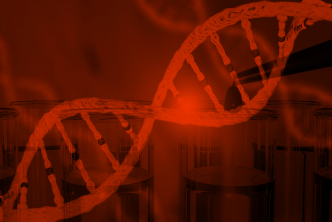Genetic Medicine Leadership: Pioneering Science That Rewards Innovation
In this video, Abhi Gupta, Head of Cell and Gene Therapy at Syneos Health, interviews Bob Smith, the former Senior Vice President of Gene Therapy and Rare Disease Commercial Strategy and Innovation at Pfizer.
Together, they discuss:
- The transformative potential of gene therapies for patients, particularly with rare diseases
- Challenges of applying gene therapies to the right patients at the right stage of their disease progression and the need for better diagnostic tools
- Difficulties in manufacturing gene therapies at commercial scale
- Barriers to access and affordability
At Syneos Health we are passionate about collaborating for a cure.
Follow the Transcript Below
Abhi (00:02):
Hi everyone. My name is Abhi Gupta. I'm the Head of Cell and Gene Therapy here at Syneos Health, and welcome to today's Genetic Medicines Leadership Series where we sit down with key leaders to gather their perspectives in Cell and Gene Therapy.
In this episode, we are talking to Bob Smith, who was Senior Vice President of Gene Therapy and Rare Disease Commercial Strategy and Innovation at Pfizer. He's also a member of the Executive Committee of the Alliance for Regenerative Medicines, where he serves as a chair of the Board's Governance and Operations Committee. Bob, welcome to Syneos [Health].
Bob (00:38):
Thank you, Abhi. Very happy to be here and thanks for the kind invitation to speak with you today.
Abhi (00:44):
I guess one of the things I realized working with you was that in the last decade or so you've had a relentless focus on patients, and in fact, you've coined a term where a one-time treatment can enable a lifetime experience.
What do you think it really means to be a patient in a genetic medicine trial?
Bob (01:03):
Well, I think particularly in the area of rare monogenic diseases, so these are patients who have a single gene defect, and it could be a missing gene or it could be an altered gene that doesn't produce a physiologic functioning protein. What we can do now with our gene therapies is we can deliver a correct fully functioning copy of that gene that replaces, in terms of its function, to produce a normal physiologic protein that patient otherwise wouldn't enable to make by his or herself.
(01:38):
You can think of it as the body is using its own cellular machinery to correct the disease that it has. And I would describe it as these are transformational types of therapies. In its simplest way a patient before they get treated with gene therapy is a patient. The day after they're treated with a gene therapy, they could not be a patient again. They'll still have the genetic alteration, but they'll be able to have a normal physiologic function and hopefully a restoration of their disease state so that they could have a normal, healthy, productive life after their treatment. It's really quite transformational.
Abhi (02:20):
Behind these transformational therapies are this entire ecosystem of entrepreneurs and investors that are bringing these therapies and taking a lot of risks to bring these to patients. What are some of the top few challenges that are unique to genetic medicines as they think about bringing these therapies to patients?
Bob (02:41):
Yeah, I would say there's probably a couple that are noteworthy. The first is we really need to apply these gene therapies to the right patients at the right stage in the progression of their disease. For example, there are some diseases that have a degenerative component to them so that as a patient grows and advances in age, their disease state may continue to deteriorate. There's an element of we need to be able to treat them at the period of time when they still have enough -- what I describe as physiologic reserve – so that the gene therapy will be able to correct the disease or at least stabilize it. If patients are too far progressed into their disease state, they may unfortunately not have the same benefit as someone who was treated very early in the disease state. That means we need to have better ways of diagnosing them.
(03:37):
We need to have therapies that we can manufacture at commercial scale, because these gene therapies are all by their nature very difficult to manufacture. It's the disease state, the period of treatment window in their disease state, the ability to manufacture. And I think what we're going to find now is more and more gene therapies make it through clinical trials and onto the commercial market.
One of the big challenges, I think that we're having with gene therapy is because of the cost of development and the cost of manufacturing, and [if] you look at a lifetime benefit, how will the healthcare system reward innovation and people who are willing to make that investment where you have a completely different kind of benefit to payment model? And that's something where I think there's been some good progress made with the very few gene therapies that have now been commercialized. Access, affordability and the payer environment is still very challenging.
Abhi (04:37):
It almost sounds like you're advocating for early engagement and shifting the environment of how these therapies are adopted into the healthcare systems.
Bob (04:45):
Oh, absolutely. Because I think one of the big challenges, particularly for investors, is they compare the riskiness of investing in a genetic medicine where it's pioneering science. It's treating very complicated diseases by their nature, it's hard to manufacture, and then you have some commercial uncertainty. And they look at that and they say, "Well, I could just invest in something else that doesn't have all of these challenges." And I think what we want to be able to do is create an environment that rewards innovation, particularly for transformational clinical benefit, that if we don't do this, many, many patients, and we're talking particularly for rare diseases with monogenic disorders that are potentially treatable, there's more than 300 million people globally. You think about that, that's essentially the population of the United States.
Abhi (05:37):
Bob, you've had almost a storied career in terms of championing risky new genetic medicines for patients that really need this. What is your hope and vision for the next five to 10 years in this field? What would you like to see more of?
Bob (05:54):
Well, I would probably put it into two buckets, scientific advancements to address some of the challenges and limitations that we have with the current suite of genetic medicine technologies. There, I have a high degree of confidence that the pace of innovation, particularly now around non-viral delivery of genetic material, use of lipid nanoparticles as an example, is I think going to be a fundamental quantum change in terms of addressing some of the limitations of viral mediated delivery. But I think there is probably also something on the clinical side is we're doing more and more basic research using genetic screening to earlier diagnose patients who could be treated in a more optimal window in their disease state.
(06:46):
And right now, the average time between a patient with a rare monogenic disease from when their symptoms start to when they're diagnosed could be as long as five or seven years. In many disease states, that's way too long to be able to have an intervention with a gene therapy that would benefit the patient optimally. I think there's a variety of things that we can do, and in some areas of the country now, people are starting to think about doing genome-wide screening on newborns so that we can have a genetic database across multiple, multiple patients before they're a patient.
Abhi (07:22):
Well, Bob, thank you on behalf of Syneos [Health] for sitting down with me.
Bob (07:26):
You're very welcome. Thanks for having me.







